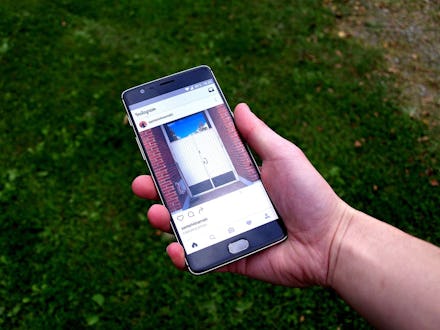Instagram isn't limiting the reach of posts. Here's how its algorithm actually works

If you've scrolled through your Instagram feed recently, there's a decent chance you've seen a message claiming that platform has started to limit the reach of posts. It's not entirely clear where these posts originated from, but there are also a handful of blog posts targeted at businesses and folks who want to optimize their presence that claim that Instagram hides posts and that the algorithm is limiting posts to just 10 percent of a user's audience. One such Instagram post making the rounds recently reads:
Instagram has changed its algorithm so only 10% of followers see our posts. If you see this post, please like and comment yes. This helps the algorithm and you will start seeing posts again.
One blog alleges the change came in April of this year, but another site made the 10 percent claim back in February 2018, so the idea has been floating out there for awhile now. Much of the panic seems to stem from when Instagram went away from chronological order back in 2016, and the rumors haven't stopped since. This isn't even the first time this year that similar style posts have started appearing on Instagram. A slew of posts claiming Instagram was limiting posts to reach just seven percent of followers cropped up back in January. Again, there is no indication of where that figure comes from.
Basically any time these types of posts crop up, it's safe to assume they are nonsense. When asked about the posts, a spokesperson for Instagram told Mic, "No, the claims are not true."
According to the spokesperson, Instagram doesn't "limit posts to any percentage of a person's audience." In fact, very little of a post's reach has to do with the person posting it. Instagram personalizes its feed for the viewer, so it is primarily dependent on a person's viewing habits.
When someone complains about their posts being limited, it likely means that they are not getting much engagement by way of likes or comments. It is possible to see some additional metrics on business accounts, but average users wouldn't know how many people have viewed a given post, which is different than how many people engaged with it.
The misguided posts typically attempt to "help" or game the algorithm by producing a ton of engagement and asking people to like and comment. That's a misunderstanding of how Instagram decides what to prioritize in a person's feed. According to the company spokesperson, Instagram does use likes "as a signal to rank posts" in a person's feed. But it also uses a variety of other signals that have less to do with a single like or comment. Per Instagram's spokesperson, the three signals that matter most when ranking posts are: "The likelihood you’ll be interested in the content, the timeliness of the post [and] the strength of your connection to the person posting." If someone is simply scrolling by a post without stopping, tapping to view, liking or commenting, Instagram isn't going to rank that post above content that the person spends more time with.
Instagram also takes into consideration exactly how a person uses the app. For users who use the app every single day and regularly scroll through their feed, it's more likely they will see posts made that day because they likely already saw posts from prior days. Users who only open the app on weekends are more likely to see posts from the course of the week mixed in. Number of followers also matters. If a person only follows a handful of accounts, it's likely they will see everything posted in a given day. If they follow 2,000 accounts, Instagram attempts to prioritize what posts they are most likely to want to see.
Odds are good that you'll continue to see posts claiming that Instagram's algorithm is limiting a user's audience. Much like the "copyright protection" statuses that show up on Facebook, these messages seem to pop up every couple months no matter how often they are debunk. If you see them, just keep scrolling — unless that's the type of content you want to see more of.